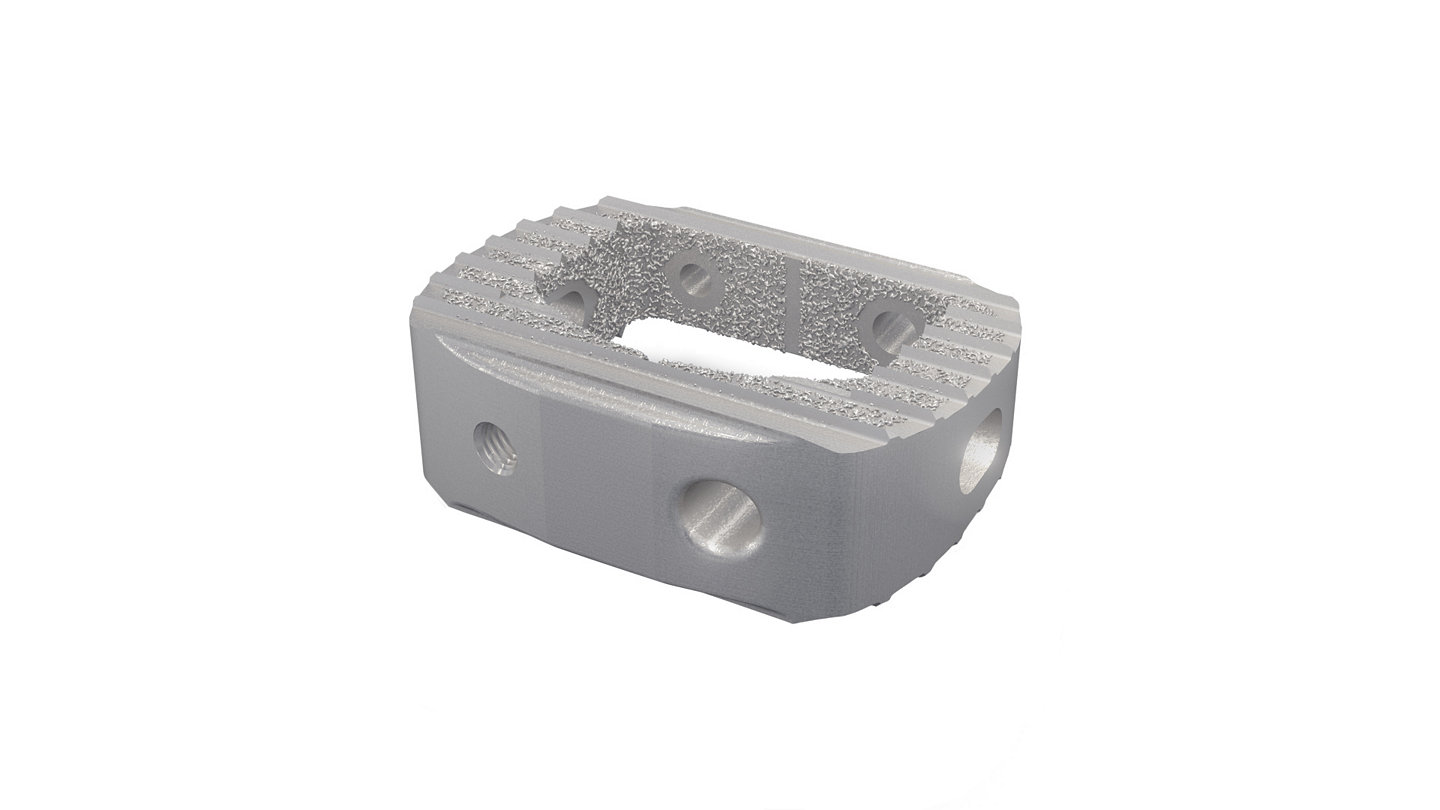ä ò∑≥«‚Äôs Spine Division Receives FDA Clearance for 3D-Printed Tritanium¬Æ C Anterior Cervical Cage
20-Sep-2017

ä ò∑≥«‚Äôs Spine division today announced that its Tritanium¬Æ C Anterior Cervical Cage, a 3D-printed interbody fusion cage intended for use in the cervical spine, has received 510(k) clearance from the U.S. Food and Drug Administration.
The Tritanium C Anterior Cervical Cage is constructed from ä ò∑≥«‚Äôs proprietary 1 a novel, highly porous titanium material designed for bone in-growth and biological fixation.1 Tritanium material may be able to wick or retain fluid, in contrast to traditional titanium material.2
‚ÄúWe are excited to introduce the Tritanium C Anterior Cervical Cage following the successful launch last year of our Tritanium Posterior Lumbar Cage,‚Äù said Bradley Paddock, President of ä ò∑≥«‚Äôs Spine division. ‚ÄúThe benefits of additive manufacturing to create highly porous spinal implants that are ‚Äòengineered for bone‚Äô are becoming increasingly clear. Additive manufacturing allows us to push beyond conventional manufacturing techniques to address design complexity and achieve previously unmanufacturable geometries, while delivering the performance, reproducibility, and quality our customers have come to expect.‚Äù
The unique porous structure of the Tritanium material is designed to create a favorable environment for cell attachment and proliferation, as demonstrated in an in-vitro study.3* It is inspired by the microstructure of cancellous bone4 and enabled by AMagine‚Ñ¢, ä ò∑≥«‚Äôs proprietary approach to implant creation using additive manufacturing, also known as 3D printing.
The Tritanium C Anterior Cervical Cage features an open central graft window and lateral windows to help reduce stiffness of the cage and minimize subsidence. In addition, the large graft window allows for bone graft containment. Engineered for stability,5 the cage has serrations on the superior and inferior surfaces designed for bidirectional fixation and to maximize surface area for endplate contact with the cage. Its smooth posterior edges help to facilitate insertion and protect soft tissue and anatomy. The Tritanium C Anterior Cervical Cage is offered in a number of footprints, heights, and lordotic angles to adapt to a variety of patient anatomies. It will be available to surgeons in Q4 2017.
Intended Use (US)
The Tritanium C Anterior Cervical Cage is indicated for use in cervical interbody fusion procedures in skeletally mature patients with degenerative disc disease (DDD) at one level or two contiguous levels from the C2 to T1 disc. The cage is to be used with autogenous and/or allogenic bone graft comprised of cancellous and/or corticocancellous bone graft, and is to be implanted via an open, anterior approach. For the full indications for use, please refer to the Tritanium C Anterior Cervical Cage Instructions for Use.
ä ò∑≥« ä ò∑≥«
ä ò∑≥« is one of the world‚Äôs leading medical technology companies and, together with its customers, is driven to make healthcare better. The company offers innovative products and services in Orthopaedics, Medical and Surgical, and Neurotechnology and Spine that help improve patient and hospital outcomes. More information is available at www.stryker.com.
References
1. PROJ43909: Tritanium technology claim support memo
2. RD0000050927: Tritanium material capillary evaluation
3. RD0000053710: Tritanium cell infiltration and attachment experiment
*No correlation to human clinical outcomes has been demonstrated or established
4. Karageorgiou V, Kaplan D. Porosity of 3D biomaterial scaffolds and osteogenesis. Biomaterials, 26, 5475-5491
5. PROJ44960: Coefficient of friction memo
Content ID TRICC-PR-1_15507
Contacts
Sullivan & Associates
Barbara Sullivan, 714/374–6174
bsullivan@sullivanpr.com
